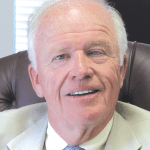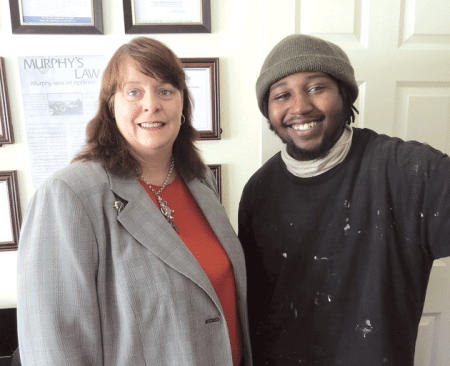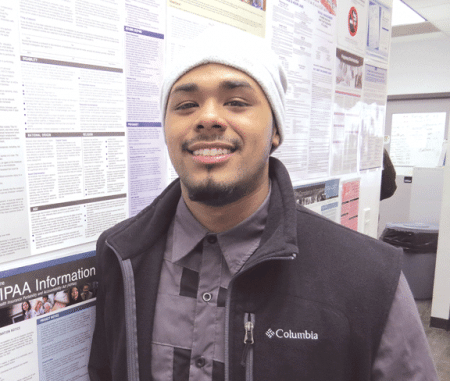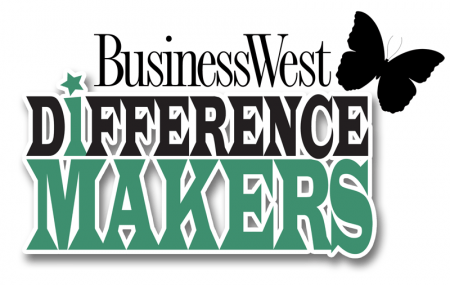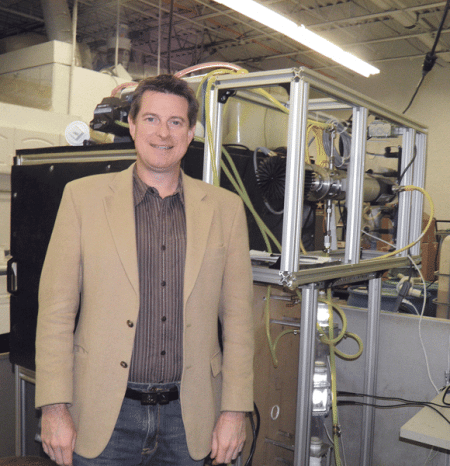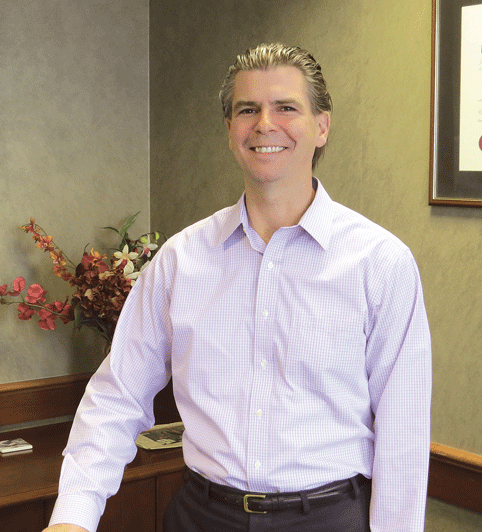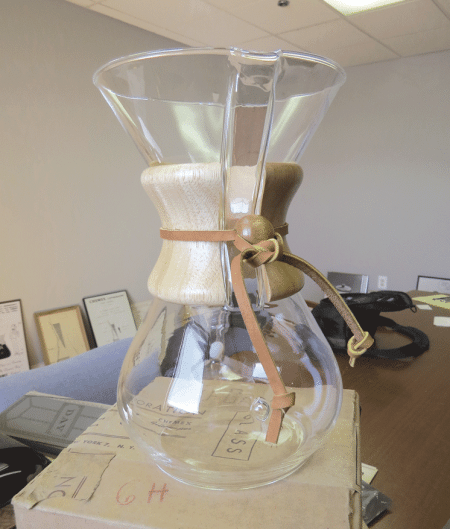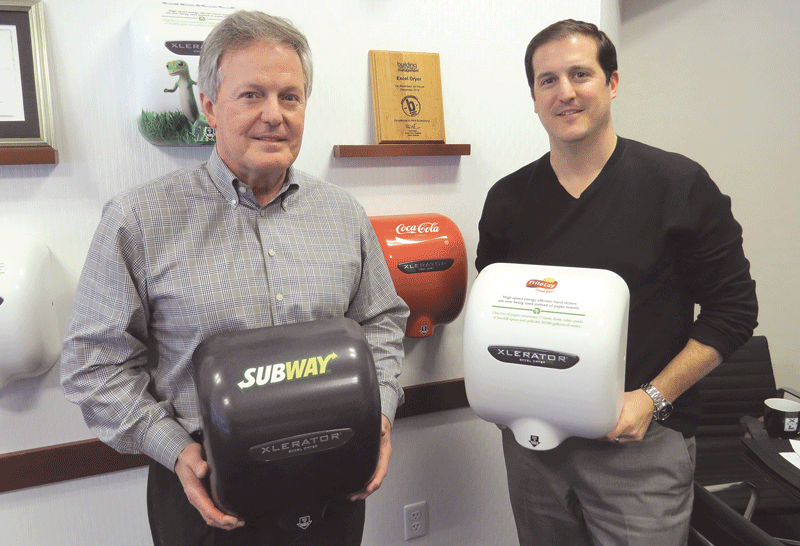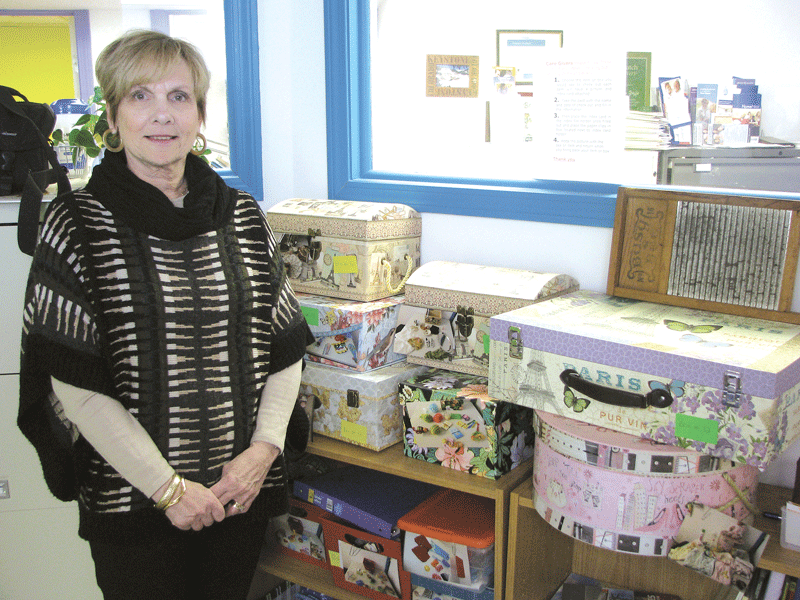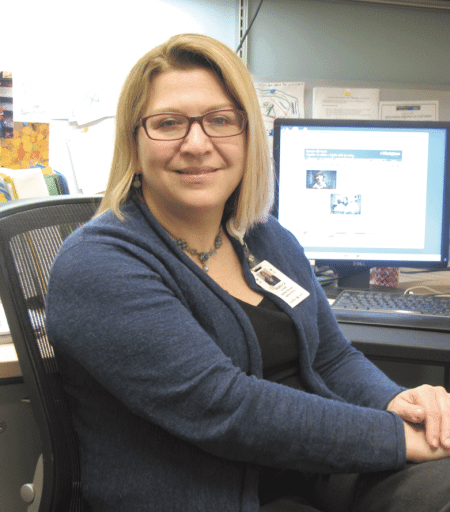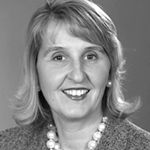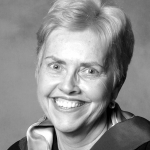The following real estate transactions (latest available) were compiled by Banker & Tradesman and are published as they were received. Only transactions exceeding $115,000 are listed. Buyer and seller fields contain only the first name listed on the deed.
FRANKLIN COUNTY
BUCKLAND
48 Prospect St.
Buckland, MA 01338
Amount: $120,000
Buyer: Grinnell Real Estate LLC
Seller: Barry L. Nye
Date: 02/04/15
DEERFIELD
32 Sawmill Plain Road
Deerfield, MA 01373
Amount: $280,000
Buyer: Thaddeus W. Jarowski
Seller: David A. Degon
Date: 02/05/15
GREENFIELD
182 Chapman St.
Greenfield, MA 01301
Amount: $127,000
Buyer: Sherlene N. Taylor
Seller: Paula D. Drown
Date: 02/04/15
280 Deerfield St.
Greenfield, MA 01301
Amount: $235,000
Buyer: Patrick S. Fields
Seller: Keith D. Ranney
Date: 01/29/15
48 Elm St.
Greenfield, MA 01301
Amount: $160,000
Buyer: Gavin R. Lofland
Seller: Shawn A. Coates
Date: 01/30/15
20 Pine St.
Greenfield, MA 01301
Amount: $142,000
Buyer: Douglas T. Patterson
Seller: Joan Ward
Date: 01/30/15
22 Rockland Road
Greenfield, MA 01301
Amount: $265,000
Buyer: Shawn A. Coates
Seller: Cromack, Clayton D., (Estate)
Date: 01/30/15
161 School St.
Greenfield, MA 01301
Amount: $152,000
Buyer: Scott M. Lehman
Seller: Jean P. Migeon
Date: 01/30/15
119 Shelburne Road
Greenfield, MA 01301
Amount: $213,000
Buyer: Faith Kaemmerlen
Seller: Matthew D. Parody
Date: 01/29/15
123 Shelburne Road
Greenfield, MA 01301
Amount: $213,000
Buyer: Faith Kaemmerlen
Seller: Matthew D. Parody
Date: 01/29/15
HAWLEY
49 East Road
Hawley, MA 01339
Amount: $380,000
Buyer: James R. Schaefer
Seller: Edwin J. Berliner
Date: 01/26/15
LEYDEN
92 Simon Keets Road
Leyden, MA 01337
Amount: $220,500
Buyer: Erica L. Jensen
Seller: Peter S. Apostoles
Date: 01/30/15
MONTAGUE
58 Central St.
Montague, MA 01349
Amount: $165,000
Buyer: Allen Fowler
Seller: John W. Doran
Date: 02/03/15
10 Federal St.
Montague, MA 01349
Amount: $155,000
Buyer: Kimberly R. Niedzwiedz
Seller: Corrine E. Sysun
Date: 01/30/15
7-9 Franklin St.
Montague, MA 01349
Amount: $135,500
Buyer: Angela Smith-Laclaire
Seller: Toby A. Holmes
Date: 01/28/15
59 Hillside Road
Montague, MA 01351
Amount: $153,000
Buyer: American General Home Equity
Seller: Scott B. Walsh
Date: 01/26/15
54 Turnpike Road
Montague, MA 01376
Amount: $140,000
Buyer: Jean Walden
Seller: Patrick McCoy
Date: 01/28/15
NORTHFIELD
37 Pine St.
Northfield, MA 01360
Amount: $290,000
Buyer: Suzan J. Smith
Seller: William Labombard
Date: 01/30/15
ORANGE
24 Johnson Road
Orange, MA 01364
Amount: $138,000
Buyer: John D. Carey
Seller: Hometown Bank
Date: 02/05/15
47 Shelter St.
Orange, MA 01364
Amount: $155,000
Buyer: Joseph A. Easton
Seller: Workers Credit Union
Date: 02/03/15
SHELBURNE
Smead Hill Road
Shelburne, MA 01370
Amount: $162,000
Buyer: Rae Properties LLC
Seller: Susie L. Gribbell
Date: 02/06/15
SHUTESBURY
109 Pratt Corner Road
Shutesbury, MA 01072
Amount: $220,000
Buyer: Adam G. Black
Seller: Anjali B. Dziadzio
Date: 01/26/15
SUNDERLAND
85 Old Amherst Road
Sunderland, MA 01375
Amount: $239,700
Buyer: Joseph J. Delaney
Seller: Walter G. Bielunis
Date: 01/30/15
201 Plumtree Road
Sunderland, MA 01375
Amount: $362,000
Buyer: Edward H. Kaplan
Seller: William W. Wells
Date: 01/30/15
HAMPDEN COUNTY
AGAWAM
26 Hearthstone Dr.
Agawam, MA 01001
Amount: $298,000
Buyer: David Bolio
Seller: Barry J. Lafoe
Date: 02/03/15
62 Ramah Circle North
Agawam, MA 01001
Amount: $320,000
Buyer: Joseph F. Dempsey
Seller: Andra L. Fountain
Date: 01/30/15
38-40 River St.
Agawam, MA 01001
Amount: $155,000
Buyer: Eugeniu E. Corja
Seller: Raymond J. Nardi
Date: 01/30/15
632-634 Springfield St.
Agawam, MA 01030
Amount: $250,000
Buyer: Hemal K. Batteriwala
Seller: Pravin J. Patel
Date: 02/04/15
709 Suffield St.
Agawam, MA 01001
Amount: $177,000
Buyer: Rouhana C. Boulos
Seller: Michael A. Torcia
Date: 02/06/15
10 Woodside Dr.
Agawam, MA 01001
Amount: $250,000
Buyer: Carole J. Calabrese
Seller: Charles A. Calabrese
Date: 01/30/15
CHICOPEE
261 Arcade St.
Chicopee, MA 01020
Amount: $181,000
Buyer: Allan P. Cote
Seller: Ryan T. Matlasz
Date: 02/05/15
27 Baltic Ave.
Chicopee, MA 01020
Amount: $130,000
Buyer: Bradley T. Boulanger
Seller: Patricia A. Boulanger
Date: 02/04/15
179 Carew St.
Chicopee, MA 01020
Amount: $212,000
Buyer: Paul G. Beauchemin
Seller: Robert J. Axner
Date: 01/29/15
16 Chateaugay St.
Chicopee, MA 01020
Amount: $185,000
Buyer: Wieslaw Macko
Seller: Marlin Investments LLC
Date: 01/30/15
16 Davenport St.
Chicopee, MA 01013
Amount: $150,000
Buyer: Aimee Perreault
Seller: Barbara A. Claffey
Date: 02/06/15
4 Dobek Ave.
Chicopee, MA 01020
Amount: $219,020
Buyer: Household Finance Corp. 2
Seller: Eugene J. Gay
Date: 02/04/15
21 Dorrance St.
Chicopee, MA 01013
Amount: $127,000
Buyer: Robert Laquerre
Seller: Jamison Quist
Date: 02/03/15
10 Harvey St.
Chicopee, MA 01020
Amount: $242,300
Buyer: Robert Baron
Seller: Gary S. Toth
Date: 01/29/15
15 Henry St.
Chicopee, MA 01020
Amount: $122,000
Buyer: Justin A. Bergeron
Seller: Tara M. Abramowicz
Date: 01/30/15
21 Lyman Road
Chicopee, MA 01013
Amount: $172,000
Buyer: Robert F. Majkowski
Seller: Michael W. Dziekan
Date: 02/06/15
68 Marion St.
Chicopee, MA 01013
Amount: $175,000
Seller: Dorothy B. Swidrak
Date: 01/30/15
48 Mary St.
Chicopee, MA 01020
Amount: $176,900
Buyer: Carlton F. Crudup
Seller: Martyn Green
Date: 01/30/15
81 Mount Royal St.
Chicopee, MA 01020
Amount: $245,000
Buyer: Yvette Owusu
Seller: Darrel H. Seal
Date: 02/06/15
35 Parkwood Dr.
Chicopee, MA 01013
Amount: $145,000
Buyer: Jason M. Saletnik
Seller: Gregory S. Schlagel
Date: 01/30/15
91 Sherman Ave.
Chicopee, MA 01013
Amount: $182,000
Buyer: Elian A. Marquez
Seller: Yazmin Diaz
Date: 02/04/15
Willimansett Terrace
Chicopee, MA 01020
Amount: $142,000
Buyer: Taras Levchyk
Seller: Marilyn Crevier
Date: 02/06/15
EAST LONGMEADOW
56 Avery St.
East Longmeadow, MA 01028
Amount: $284,500
Buyer: John W. Foster
Seller: Nu Way Homes Inc.
Date: 01/30/15
80 Braeburn Road
East Longmeadow, MA 01028
Amount: $165,000
Buyer: Danielle Geoffrion
Seller: Heather J. Champagne
Date: 01/30/15
9 Capri Dr.
East Longmeadow, MA 01028
Amount: $318,006
Buyer: Dino A. Isotti
Seller: Kent Pecoy & Sons Construction
Date: 02/05/15
11 Donamor Lane
East Longmeadow, MA 01028
Amount: $219,500
Buyer: Gabrielle D. Ploss
Seller: Michael D. Smith
Date: 01/28/15
28 Edmund St.
East Longmeadow, MA 01028
Amount: $125,000
Buyer: Nu Way Homes Inc.
Seller: Joyce A. Sibley
Date: 02/05/15
60 Highlandview Ave.
East Longmeadow, MA 01028
Amount: $292,500
Buyer: Sean E. Roseburg
Seller: Michael Torcia
Date: 02/06/15
655 North Main St.
East Longmeadow, MA 01028
Amount: $185,000
Buyer: Ambrose I. Mwea
Seller: Christensen, Ruth E., (Estate)
Date: 02/06/15
499 Somers Road
East Longmeadow, MA 01028
Amount: $135,000
Buyer: Michael J. Germain
Seller: Shirley J. Hahn
Date: 01/28/15
GRANVILLE
241 North Lane
Granville, MA 01034
Amount: $245,000
Buyer: Adrian R. Bosley
Seller: Holly N. Doran
Date: 01/30/15
HAMPDEN
12 Andrew Circle
Hampden, MA 01036
Amount: $377,000
Buyer: Gary C. Roy
Seller: Stanley Czaplicki
Date: 01/29/15
HOLLAND
3 Lakeridge Dr.
Holland, MA 01521
Amount: $200,000
Buyer: Robert L. Jones
Seller: Daniel G. Lanza
Date: 02/06/15
HOLYOKE
42 Berkshire St.
Holyoke, MA 01040
Amount: $117,000
Buyer: Josue Arroyo
Seller: Rafael Arroyo
Date: 01/30/15
73 Brookline Ave.
Holyoke, MA 01040
Amount: $125,500
Buyer: Lindsey G. Brynjolfsson
Seller: Lee A. Bourdon
Date: 01/30/15
3-9 Brown Ave.
Holyoke, MA 01040
Amount: $700,000
Buyer: Makkah LLC
Seller: BDMG LLC
Date: 01/30/15
379 Linden St.
Holyoke, MA 01040
Amount: $225,000
Buyer: Debra Stosz
Seller: Michael M. Powell
Date: 02/06/15
45 Sterling Road
Holyoke, MA 01040
Amount: $260,000
Buyer: Thomas Drohan
Seller: Robert T. Clayton
Date: 01/30/15
32 Valley Hts.
Holyoke, MA 01040
Amount: $142,800
Buyer: Melissa S. Stearns
Seller: Thomas J. Ginley
Date: 01/30/15
LONGMEADOW
113 Albemarle Road
Longmeadow, MA 01106
Amount: $180,000
Buyer: David M. Morneau
Seller: Allen Sommer
Date: 01/30/15
9 Caravelle Dr.
Longmeadow, MA 01106
Amount: $275,000
Buyer: Charlotte Zeller
Seller: Shuo Xu
Date: 02/04/15
38 Chiswick St.
Longmeadow, MA 01106
Amount: $182,500
Buyer: Scott Humble
Seller: Howes, Arlene H., (Estate)
Date: 02/03/15
45 Exeter Ave.
Longmeadow, MA 01106
Amount: $470,000
Buyer: Jonathan R. Shayne
Seller: Wilson C. Mertens
Date: 01/30/15
45 Harwich Road
Longmeadow, MA 01106
Amount: $405,000
Buyer: Matthew B. Woodfield
Seller: Daniel L. Landry
Date: 01/29/15
61 Pinewood Dr.
Longmeadow, MA 01106
Amount: $440,000
Buyer: Sotiris Stamou
Seller: Anne S. Robinson
Date: 02/05/15
249 Redfern Dr.
Longmeadow, MA 01106
Buyer: Karl Schuhlen
Seller: Brian M. Axler
Date: 01/29/15
40 Sunset Lane
Longmeadow, MA 01106
Amount: $145,000
Buyer: FNMA
Seller: Clifford L. Lagassie
Date: 01/28/15
36 Warwick St.
Longmeadow, MA 01106
Amount: $288,000
Buyer: John M. Beattie
Seller: Katherine T. Lavallee
Date: 02/05/15
LUDLOW
19 Barre Dr.
Ludlow, MA 01056
Amount: $219,000
Buyer: Stephane L. Cloutier
Seller: Vestal, Concepcion, (Estate)
Date: 01/30/15
1623 Center St.
Ludlow, MA 01056
Amount: $273,000
Buyer: Edwin Torres
Seller: Stephen E. Alspach
Date: 02/05/15
483 Chapin St.
Ludlow, MA 01056
Amount: $200,000
Buyer: Eric R. Pollander
Seller: AMP Real Estate Group LLC
Date: 02/06/15
211 Holyoke St.
Ludlow, MA 01056
Amount: $178,000
Buyer: Laura J. Howland
Seller: Lori A. Braga
Date: 01/29/15
88 Kirkland Ave.
Ludlow, MA 01056
Amount: $176,700
Buyer: Karen Szlosek-Welch
Seller: Kirkland RT
Date: 01/30/15
48 Lehigh St.
Ludlow, MA 01056
Amount: $172,000
Buyer: Victoria C. Baines
Seller: Manuel C. Vitorino
Date: 02/06/15
250 Miller St.
Ludlow, MA 01056
Amount: $147,000
Buyer: Nicole V. Libiszewski
Seller: Bruschi, Karen M., (Estate)
Date: 01/28/15
126 Reynolds St.
Ludlow, MA 01056
Amount: $218,000
Buyer: Matthew D. Wrisley
Seller: Christopher C. Gregoire
Date: 02/04/15
133 Shawinigan Dr.
Ludlow, MA 01056
Amount: $120,000
Buyer: Windsor Locks FCU
Seller: Laura M. Castoe
Date: 02/03/15
153 Whitney St.
Ludlow, MA 01056
Amount: $170,000
Buyer: Kristie L. Learned
Seller: Paula L. Moretti
Date: 01/28/15
MONSON
23-1/2 Mechanic St.
Monson, MA 01057
Amount: $135,000
Buyer: Deborah F. McGorry
Seller: Keith L. Sisco
Date: 01/30/15
51 Wales Road
Monson, MA 01057
Amount: $185,000
Buyer: Andrew P. Beaulieu
Seller: Darryl R. Smart
Date: 01/28/15
MONTGOMERY
1 Jason Road
Montgomery, MA 01085
Amount: $284,000
Buyer: Matthew W. Freniere
Seller: Jeremy Horning
Date: 01/30/15
PALMER
2141 Baptist Hill Road
Palmer, MA 01069
Amount: $305,000
Buyer: Richard D. Carey
Seller: John B. Foley
Date: 01/30/15
12 Peterson Road
Palmer, MA 01069
Amount: $286,000
Buyer: Erik T. Kaiser
Seller: Stone Bear LLC
Date: 01/30/15
RUSSELL
51 Highland Ave.
Russell, MA 01071
Amount: $206,000
Buyer: Lee M. Kozikowski
Seller: Duane P. Desilets
Date: 01/30/15
SPRINGFIELD
350 Abbott St.
Springfield, MA 01118
Amount: $171,500
Buyer: Octavia D. Peterson
Seller: Ryan L. Mayhew
Date: 01/28/15
1237-1239 Berkshire Ave.
Springfield, MA 01151
Amount: $150,000
Buyer: Yellowbrick Property LLC
Seller: Yellowbrick Property LLC
Date: 02/03/15
130 Berkshire St.
Springfield, MA 01151
Amount: $185,000
Buyer: Northeast Center For Youth
Seller: Roger A. Gallagher
Date: 02/04/15
123 Bronson Terrace
Springfield, MA 01108
Amount: $170,000
Buyer: Rana Morton
Seller: Janet A. Crosier
Date: 01/30/15
113 Canton St.
Springfield, MA 01104
Amount: $115,000
Buyer: Beverly R. Mulvaney
Seller: David Cross
Date: 02/04/15
851 Carew St.
Springfield, MA 01104
Amount: $165,000
Buyer: Gary W. Keefe
Seller: Greenleaf Holdings Inc.
Date: 01/26/15
336 Central St.
Springfield, MA 01105
Amount: $155,000
Buyer: Karla Iborty
Seller: Viva Development LLC
Date: 01/30/15
84-86 Chapin Terrace
Springfield, MA 01107
Amount: $320,000
Buyer: Caraballo Realty LLC
Seller: Jose E. Llorens
Date: 02/04/15
40 Delmore St.
Springfield, MA 01109
Amount: $126,000
Buyer: John A. Lawton
Seller: Andre Houle
Date: 01/29/15
18 Denver St.
Springfield, MA 01109
Amount: $150,000
Buyer: Brandie L. Seymour
Seller: Tyrome M. Witherspoon
Date: 01/30/15
1157-1169 East Columbus Ave.
Springfield, MA 01105
Amount: $267,000
Buyer: 180 Redevelopment LLC
Seller: Theresa Dangelantonio
Date: 02/03/15
961 East Columbus Ave.
Springfield, MA 01105
Amount: $130,000
Buyer: Robert D. Ober
Seller: Sandon Realty LLC
Date: 02/05/15
43-45 Eagle St.
Springfield, MA 01107
Amount: $144,000
Buyer: Steven Al-Husseini
Seller: Little Eagle LLC
Date: 02/06/15
8 Fenway Dr.
Springfield, MA 01119
Amount: $144,900
Buyer: Kenneth Fontanez
Seller: Taylor McDonald
Date: 02/02/15
28 Freeman Terrace
Springfield, MA 01104
Amount: $118,466
Buyer: Bayview Loan Servicing
Seller: Herminio Perez
Date: 01/26/15
33 Homestead Ave.
Springfield, MA 01151
Amount: $145,000
Buyer: Daniel Delaney
Seller: Tatyana N. Bocharnikova
Date: 01/30/15
49 Lexington St.
Springfield, MA 01107
Amount: $175,403
Buyer: FNMA
Seller: Jose A. Rodriguez
Date: 02/02/15
79 Linnell St.
Springfield, MA 01104
Amount: $152,400
Buyer: David J. Abbott
Seller: Tammy E. Robinson
Date: 02/05/15
164 Lumae St.
Springfield, MA 01119
Amount: $153,900
Buyer: Steven F. Desantis
Seller: Theodore H. Knee
Date: 01/30/15
816-828 Main St.
Springfield, MA 01105
Amount: $228,000
Buyer: 816 Main Street RT
Seller: James F. Fenton
Date: 02/05/15
45 Malden St.
Springfield, MA 01108
Amount: $121,035
Buyer: AHAP LLC
Seller: JJS Capital Investment
Date: 01/26/15
90-92 Marlborough St.
Springfield, MA 01109
Amount: $124,900
Buyer: A To Z Property Mgmt. & Renovation
Seller: Hallerin Realty LLP
Date: 01/30/15
117 Middle St.
Springfield, MA 01104
Amount: $120,000
Buyer: Jovany Pinto
Seller: John H. Westcott
Date: 01/30/15
67-69 Norfolk St.
Springfield, MA 01109
Amount: $145,000
Buyer: Tessa T. Innis
Seller: CTL Realty LLC
Date: 01/28/15
15 Oakhurst St.
Springfield, MA 01104
Amount: $125,000
Buyer: Angel M. Bermudez
Seller: Milton B. Curry
Date: 01/30/15
33 Redden St.
Springfield, MA 01119
Amount: $135,000
Buyer: Ruth Roldan
Seller: Anne K. Ambrose
Date: 01/28/15
17 Spruceland Ave.
Springfield, MA 01108
Amount: $165,000
Buyer: Michael J. Fleming
Seller: Terrence O’Connell
Date: 02/03/15
51 Stratford Terrace
Springfield, MA 01108
Amount: $179,900
Buyer: Luis D. Burgos
Seller: William Raleigh
Date: 01/29/15
795 Sumner Ave.
Springfield, MA 01108
Amount: $157,000
Buyer: Veronica R. Garcia
Seller: William A. Dowell
Date: 01/30/15
50 Warehouse St.
Springfield, MA 01118
Amount: $800,000
Buyer: Electro Term Inc.
Seller: Center For Human Development Inc.
Date: 02/03/15
49 Washington Road
Springfield, MA 01108
Amount: $193,250
Buyer: Rosa M. Lopez
Seller: Stephen G. Smith
Date: 01/30/15
18 Wesson St.
Springfield, MA 01108
Amount: $118,000
Buyer: David Assarian
Seller: William P. Shamleffer
Date: 01/30/15
65 Westbrook Dr.
Springfield, MA 01129
Amount: $143,000
Buyer: Brenda I. Morales
Seller: Raco, Shirley E., (Estate)
Date: 02/04/15
77 Wilcox St.
Springfield, MA 01105
Amount: $133,000
Buyer: 180 Redevelopment LLC
Seller: Theresa Dangelantonio
Date: 02/03/15
138-140 Yale St.
Springfield, MA 01109
Amount: $125,000
Buyer: Tamara A. Williams
Seller: SAW Construction LLC
Date: 02/02/15
SOUTHWICK
168 College Hwy.
Southwick, MA 01077
Amount: $148,000
Buyer: Keith J. Hebig
Seller: Giuseppe Scuderi
Date: 02/04/15
22 Ferrin Dr.
Southwick, MA 01077
Amount: $324,200
Buyer: Charles J. Allessio
Seller: Kenneth Haar
Date: 01/29/15
69 Lakeview St.
Southwick, MA 01077
Amount: $142,000
Buyer: Ana Banari
Seller: US Bank
Date: 01/26/15
51 Mort Vining Road
Southwick, MA 01077
Amount: $459,000
Buyer: Brian M. Iserman
Seller: Urban J. Janssen
Date: 02/06/15
WALES
163 Monson Road
Wales, MA 01081
Amount: $226,706
Seller: Joseph W. Keifer
Date: 01/26/15
WEST SPRINGFIELD
181 Doty Circle
West Springfield, MA 01089
Amount: $307,500
Buyer: Gill Brothers LLC
Seller: Sergei Starosielski
Date: 02/03/15
28 Lombra Road
West Springfield, MA 01089
Amount: $168,000
Buyer: Livingstone LLC
Seller: Cella, Yvonne F., (Estate)
72 Lower Mass Ave.
West Springfield, MA 01089
Amount: $217,000
Buyer: Laura Scutt-Drohan
Seller: Ronald Raffenetti
Date: 01/30/15
346 Morgan Road
West Springfield, MA 01089
Amount: $149,000
Buyer: Mykola Mevshyy
Seller: Lesli McCellan
Date: 02/02/15
535 Piper Road
West Springfield, MA 01089
Amount: $135,000
Buyer: Sergey F. Gavel
Seller: Kozak, Robert C., (Estate)
Date: 02/03/15
WESTFIELD
23 Bush St.
Westfield, MA 01085
Amount: $150,000
Buyer: George Alvarez
Seller: Jason D. Desclos
Date: 01/28/15
48 Court St.
Westfield, MA 01085
Amount: $290,000
Buyer: Liquori Realty LLC
Seller: Douglas Clinic Inc.
Date: 01/28/15
95 Court St.
Westfield, MA 01085
Amount: $135,000
Buyer: T&S Holdings LLC
Seller: Cynthia E. Doel
Date: 01/30/15
560 East Main St.
Westfield, MA 01085
Amount: $2,300,000
Buyer: Westfield Bank
Seller: WBGLA Of Westfield MA LLC
Date: 02/06/15
587 East Main St.
Westfield, MA 01085
Amount: $2,300,000
Buyer: Westfield Bank
Seller: WBGLA Of Westfield MA LLC
Date: 02/06/15
31 Floral Ave.
Westfield, MA 01085
Amount: $129,000
Buyer: Tyler E. Hildack
Seller: FNMA
Date: 01/30/15
172 Holyoke Road
Westfield, MA 01085
Amount: $223,000
Buyer: Adam E. Abramowicz
Seller: Michelle Meyer
Date: 01/30/15
31 Kellogg St.
Westfield, MA 01085
Amount: $132,500
Buyer: Maria Malancea
Seller: Craig Filiault
Date: 01/30/15
78 Laura Dr.
Westfield, MA 01085
Amount: $205,000
Buyer: James A. Drost
Seller: James K. Mayne
Date: 01/30/15
26 Montgomery St.
Westfield, MA 01085
Amount: $132,300
Buyer: Ralph A. Mastello
Seller: Foucher, Elaine V., (Estate)
Date: 01/30/15
14 Southgate Ave.
Westfield, MA 01085
Amount: $218,000
Buyer: Lorraine M. Almeida
Seller: Home Run Properties LLC
Date: 02/03/15
20 Tekoa Terrace
Westfield, MA 01085
Amount: $155,000
Buyer: Timothy K. Derrig
Seller: Deirdre Johnson
Date: 01/30/15
43 Willow Brook Lane
Westfield, MA 01085
Amount: $323,000
Buyer: Duane P. Desilets
Seller: Lee M. Kozikowski
Date: 01/30/15
WILBRAHAM
41 Brainard Road
Wilbraham, MA 01095
Amount: $227,650
Buyer: Sara M. Bronner
Seller: Justin Kochanowski
Date: 02/06/15
75 Cherry Dr.
Wilbraham, MA 01095
Amount: $340,240
Buyer: Neil W. Bennett
Seller: 2301 Boston Road LLC
Date: 01/30/15
2 Cliffside Dr.
Wilbraham, MA 01095
Amount: $195,000
Buyer: Kaitlin S. Romaniak
Seller: O’Neil, Agnes T., (Estate)
Date: 01/29/15
2 Leemond St.
Wilbraham, MA 01095
Amount: $240,000
Buyer: Michael S. Larson
Seller: Robert F. Pabis
Date: 01/26/15
444 Soule Road
Wilbraham, MA 01095
Amount: $179,000
Buyer: Carianne E. Haluch
Seller: Tamsey, Dorothy M., (Estate)
Date: 01/30/15
553 Springfield St.
Wilbraham, MA 01095
Amount: $265,000
Buyer: Scott J. Beeman
Seller: Leslie P. Lohnes
Date: 01/30/15
4 Webster Lane
Wilbraham, MA 01095
Amount: $615,000
Buyer: Daniel Chalifour
Seller: Michael J. Thompson
Date: 01/30/15
HAMPSHIRE COUNTY
AMHERST
1260 Bay Road
Amherst, MA 01002
Amount: $152,500
Buyer: Renata Smith
Seller: Bank Of America
Date: 02/04/15
245 East Hadley Road
Amherst, MA 01002
Amount: $185,000
Buyer: Edwin E. Cruz
Seller: Mary E. Dizek
Date: 01/30/15
East Leverett Road
Amherst, MA 01002
Amount: $240,000
Buyer: MKM Investments LLC
Seller: Barry L. Roberts
Date: 01/30/15
27 Greenleaves Dr.
Amherst, MA 01002
Amount: $214,200
Buyer: Sarah J. Emans
Seller: Amhad Development Corp.
Date: 01/26/15
BELCHERTOWN
248 Amherst Road
Belchertown, MA 01007
Amount: $129,000
Buyer: Jason Gagnon
Seller: FNMA
Date: 01/30/15
240 Barton Ave.
Belchertown, MA 01007
Amount: $377,500
Buyer: Oscar A. Martinez
Seller: Christopher M. Buell
Date: 02/06/15
16 Emily Lane
Belchertown, MA 01002
Amount: $421,509
Buyer: Renee E. Drysdale
Seller: JP Builders Inc.
Date: 01/28/15
North Liberty St.
Belchertown, MA 01007
Amount: $130,000
Buyer: Pioneer Valley Custom Homes
Seller: Dudek, Sebastian E., (Estate)
Date: 02/06/15
369 State St.
Belchertown, MA 01007
Amount: $210,810
Buyer: Bradley M. Marszalkowski
Seller: Scott A. Anderson
Date: 02/02/15
CUMMINGTON
Berkshire Trail
Cummington, MA 01026
Amount: $700,000
Buyer: T&J Stone Properties LLC
Seller: MJW Properties LLC
Date: 01/28/15
EASTHAMPTON
18-20 Arlington St.
Easthampton, MA 01027
Amount: $194,400
Buyer: FHLM
Seller: Edwin J. Jeliciano
Date: 02/02/15
22 Hannum Brook Dr.
Easthampton, MA 01027
Amount: $258,000
Buyer: Stephanie E. Flaherty
Seller: Richard S. Lyman
Date: 02/03/15
55 Holyoke St.
Easthampton, MA 01027
Amount: $167,547
Buyer: US Bank
Seller: Rebecca L. Skubiszewski
Date: 01/30/15
295 Main St.
Easthampton, MA 01027
Amount: $190,000
Buyer: Martha L. Smith
Seller: Lewis, Barbara B., (Estate)
Date: 02/04/15
28 Paul St.
Easthampton, MA 01027
Amount: $335,500
Buyer: Margaret Kennedy-Nelson
Seller: David Garstka Builders
Date: 01/30/15
75 West St.
Easthampton, MA 01027
Amount: $149,500
Buyer: Kyle R. Kazunas
Seller: Eleanor J. Lussier
Date: 01/29/15
17 Westview Terrace
Easthampton, MA 01027
Amount: $230,000
Buyer: Sigmond A. Wernik LT
Seller: Craig, Jeffrey D., (Estate)
Date: 01/29/15
HADLEY
121 Rocky Hill Road
Hadley, MA 01035
Amount: $329,000
Buyer: Pamela A. Mandler
Seller: Jeanne E. Ammon
Date: 01/26/15
NORTHAMPTON
406 Acrebrook Dr.
Northampton, MA 01062
Amount: $210,000
Buyer: Jeffrey D. Maciborski
Seller: James F. Natale
Date: 01/28/15
39 Fair St.
Northampton, MA 01060
Amount: $225,000
Buyer: Stella Pang
Seller: Zewski, Stanley V., (Estate)
Date: 01/30/15
5 Garfield Ave.
Northampton, MA 01062
Amount: $116,660
Buyer: Christopher A. Wolcott
Seller: Pioneer Valley Habitat
Date: 01/29/15
591 Kennedy Road
Northampton, MA 01053
Amount: $386,000
Buyer: Jacqueline M. Urbanovic
Seller: Maureen F. Dwyer
Date: 01/30/15
103 Moser St.
Northampton, MA 01060
Amount: $404,815
Buyer: Johanna F. Silva
Seller: Kent Pecoy & Sons Construction
Date: 02/06/15
202 North Main St.
Northampton, MA 01062
Amount: $125,000
Buyer: Joslad & Associates PC
Seller: Robert G. Cromley
Date: 02/06/15
1163 Westhampton Road
Amount: $155,000
Buyer: Michael Baffaro
Seller: Hamelin, Kathryn J., (Estate)
Date: 01/30/15
33 Wilson Ave.
Northampton, MA 01060
Amount: $610,000
Buyer: Kathryn M. Reagan-Talbot
Seller: Aquadro FT
Date: 01/30/15
SOUTH HADLEY
18 Central Ave.
South Hadley, MA 01075
Amount: $152,250
Buyer: Blaney Y. Sabbs
Seller: Karen L. Szlosek-Welch
Date: 01/30/15
55 Chestnut Hill Road
South Hadley, MA 01075
Amount: $330,000
Buyer: Timothy J. Parsons
Seller: Richard D. Tufo
Date: 01/30/15
4 Pershing Ave.
South Hadley, MA 01075
Amount: $233,000
Buyer: Kerry L. Hussey
Seller: Sheri L. Parsons
Date: 01/30/15
15 Richview Ave.
South Hadley, MA 01075
Amount: $159,000
Buyer: Stephen A. Foster
Seller: Jonathan L. Burdick
Date: 01/30/15
14 Riverlodge Road
South Hadley, MA 01075
Amount: $351,300
Buyer: Daniel J. Pawlowski
Seller: Patrick J. Spring
Date: 02/03/15
SOUTHAMPTON
4 Belanger Road
Southampton, MA 01073
Amount: $155,500
Buyer: Joseph Gebo
Seller: Kennedy, James F., (Estate)
Date: 01/29/15
46 Coleman Road
Southampton, MA 01073
Amount: $120,000
Buyer: Berkshire Omega Corp.
Seller: John J. Marcyoniak
Date: 02/05/15
362 College Hwy.
Southampton, MA 01073
Amount: $140,000
Buyer: Matthew R. Boulanger
Seller: Daniel Canning
Date: 01/30/15
7 Nicholas Lane
Southampton, MA 01085
Amount: $142,000
Buyer: Anne M. Polatol
Seller: Czelusniak Custom Homes
Date: 02/03/15
Nicholas Lane #6
Southampton, MA 01073
Amount: $610,436
Buyer: Stanislav Adzigirey
Seller: James F. Boyle
Date: 02/06/15
104 Pomeroy Meadow Road
Southampton, MA 01073
Amount: $245,000
Buyer: Stacy L. Moran
Seller: Patricia R. Hagelstein
WARE
31 West Main St.
Ware, MA 01082
Amount: $135,900
Buyer: Sarah M. Desroches
Seller: Christiansen FT
Date: 01/29/15
WESTHAMPTON
212 Northwest Road
Westhampton, MA 01027
Amount: $385,000
Buyer: Garth Stevenson
Seller: Jane A. Lattes
Date: 01/26/15
WORTHINGTON
50 River Road
Worthington, MA 01098
Amount: $513,000
Buyer: Lisa A. Ouellet
Seller: Mary A. Raynor
Date: 01/26/15





